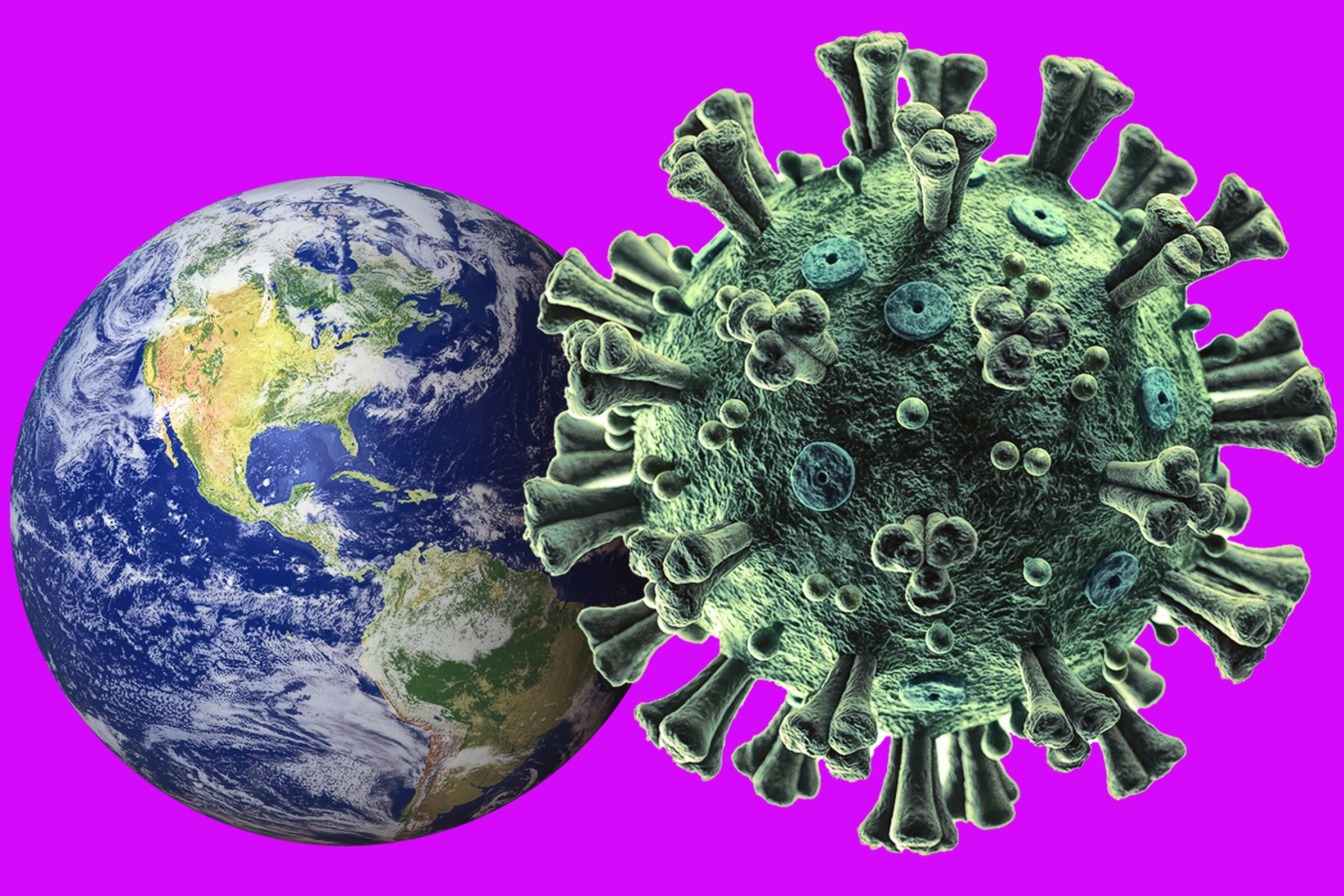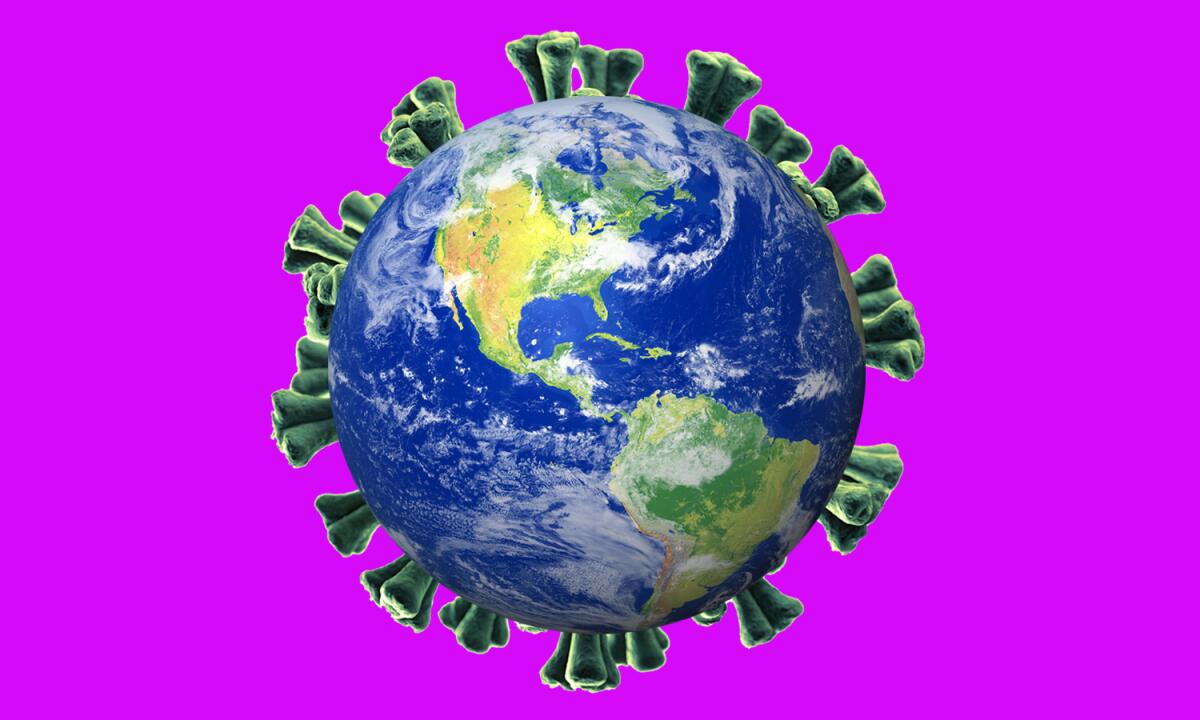The biggest entertainment stories
Get our big stories about Hollywood, film, television, music, arts, culture and more right in your inbox as soon as they publish.
You may occasionally receive promotional content from the Los Angeles Times.

Lately I’ve come to realize that the pandemic is the first panhuman event in this planet’s history or certainly in our lifetimes. How? Through globalization and technology, virtually every sentient human from a child of 3 to elders in triple-digit age brackets knows that COVID-19 is happening.
In that sense we’ve found something — finally — that unites us all, from the most remote villages to the most concentrated big cities, such as ours. The pandemic has reached deep into the Amazon, where it’s taking a devastating toll on the Yanomami, and even to tiny South Pacific islands.
For many years, we thought the internet would in some way unite all humans. But more than anything else it has largely succeeded in dividing us into minute tribes; the most dystopian version of the web has won out over the most hopeful or congealing. The nearest events you could say approximate what we are experiencing now are the terror attacks of Sept. 11, 2001 — but it would be woefully naive to conclude that people in Fiji or the depths of Siberia would have the same emotional reactions to 9/11 as we did as Americans. No, 9/11 didn’t bind the planet.
It took 2020 to do that. For the first time, everyone everywhere — whether or not they have been directly affected by the virus — is experiencing some degree of the same emotions: fear, anxiety, trepidation, and the sadness and mourning the pandemic has wrought. Even the reticence of the coronavirus protocol-skeptics could be read as reflective of those same feelings. When people are confronted with something alien and powerful, like an invisible and fatal virus, reactions can reliably range from defensiveness to denial. We hate and shun what scares us.
Of course, even if the pandemic can be considered a universal experience, its effects have not been universally applied.
Angelenos are observing Día de Muertos during a global pandemic that has devastated Latino communities everywhere. Here is how the city is honoring its victims.
Xeni Jardin, the L.A.-based writer and journalist currently isolating in southwestern Utah, talked with me over the phone this week about the ways poverty, co-morbidities and access to prevention, care and (soon) vaccines are creating wildly different frames for how the coronavirus threat is lived and viewed.
“[Futurist] William Gibson said, ‘The future is already here, it’s just not very evenly distributed,’ and now that’s the same truth of the coronavirus,” said Jardin, one of the brains behind the trailblazing tech and culture blog BoingBoing.net.
“With this pandemic, it washes over all of us in real time, and it exposes exactly what so many of us knew was always there,” she said. “That healthcare is a national security issue and that an injustice to one is an injustice to all.”
What will future generations think of 2020 as they sift through the hidden caches of face masks, hand sanitizer and “I Voted” stickers? That it was a blip of infection and insanity, the moment the world changed forever — or both?
For historians and public health experts, the parallels to the 1918 flu are obvious, although modern technologies and the connectivity they produce have made awareness of today’s COVID-19 pandemic more readily accessible, even for those who have barely left their homes since March. Everyone is watching.
On Tristan da Cunha, dubbed the world’s most remote permanently inhabited archipelago (for a fun exercise in imagining extreme isolation, try searching for it on a map), local administrator Steve Townsend wrote earlier this year in a coronavirus update: “Our nearest neighbour is over 1,200 miles away, we are used to quite a lot of isolation! However we still follow the news on the television, and are very concerned about the risk of the virus reaching the island.”
(The island cluster’s last posted update says it remains COVID-free, thus masks are not mandated for its 244 inhabitants.)
Andrew Noymer, an associate professor of public health at UC Irvine, noted that past and current mass biological threats, such as HIV-AIDS or endemic tuberculosis, are not characterized by the same sort of “insidious” threat that COVID-19 brings in broader society.
“This virus is in the sweet spot that it’s bad enough to kill us, but sort of on the range of flu in terms of the threat, and therefore easy to call bogus,” Noymer said. “But look at these hospital numbers; this is not a ‘normal’ flu season.” (An October CDC study done in Veterans Health Administration facilities found that patients hospitalized with COVID-19 were five times more likely to die than those hospitalized with the flu.)
In the sphere of public health, and where it intersects with the collective consciousness, Noymer said that in mid-January 2020 he spent “two weeks arguing on Twitter” with people who were downplaying the looming threat of COVID-19, until each of them — and each of us — had “that holy crap” moment when we realized “this is real.”

“We all know when the pandemic began for us. And I don’t mean December 2019 in Wuhan; I mean when the pandemic began for us. That’s a different date for everyone, but it’s a date that we all remember,” Noymer said. “With the exception of those of us who die, sadly, defining the end of it is going to be a lot more nebulous, because it’s going to fade away more than burn out.”
So that is us now, person to person, country to country, continent to continent. Futurists often talk of the Singularity, when the rate of technological change is so fast and so exponential that, as theorist Ray Kurzweil puts it, “human life will be irreversibly transformed.” Certainly the exponential growth of the virus has transformed us. Every human being who is aware of the pandemic and its path on the face of the planet can say that they are sharing something — waiting for the end of this. A true humankind cultural unifier, found in 2020.
The very bad year began with very bad news: the death of a premier L.A. artist. In the face of 2020’s relentless cruelties, how would he have responded?
This was the year that streaming versions of “Hamilton,” “What the Constitution Means to Me” and “Ma Rainey” proved stage stories can shine on-screen.
Film critic Justin Chang finds passion, insult comedy and a search for meaning in two restored gems: Béla Tarr’s ‘Damnation’ and Manoel de Oliveira’s ‘Francisca.’
The Whitney Museum exhibition “Vida Americana” shows that to admire 20th century American painting is to admire its Mexican influences on artists such as Jackson Pollock, Philip Guston, Jacob Lawrence and Charles White.
Often lampooned, shows like ‘Ghost Adventures’ — full of investigators, mediums, intuitives — helped bring closure in TV critic Lorraine Ali’s own life in 2020.
In the quest for better Black representation, orchestras and opera companies are improving diversity in superficial ways. Here’s how they could do better.
TV critic Robert Lloyd spent much of the first months of 2020 as a touring musician, seeing America. And then everything stopped.
In a noisy 2020, it was too easy to overlook these 10 literary gems, from Miranda Popkey’s “Topics of Conversation” to Mieko Kawakami’s “Breasts and Eggs.”
The biggest entertainment stories
Get our big stories about Hollywood, film, television, music, arts, culture and more right in your inbox as soon as they publish.
You may occasionally receive promotional content from the Los Angeles Times.